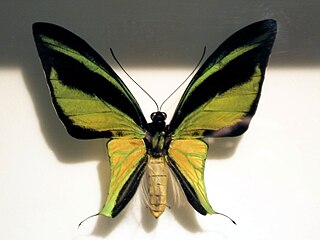
The clamorous reed warbler is an Old World warbler in the genus Acrocephalus. It breeds from Egypt eastwards through Pakistan, Afghanistan and northernmost India to south China, southeast Asia and south to Australia. A. s. meridionalis is an endemic race in Sri Lanka.

The New Zealand kaka is a large species of parrot of the family Nestoridae found in native forests of New Zealand. Two subspecies are recognised. It is endangered and has disappeared from much of its former range.

Manilkara zapota, commonly known as sapodilla, sapota, or chikoo, is a long-lived, evergreen tree native to southern Mexico, Central America and the Caribbean. An example natural occurrence is in coastal Yucatán in the Petenes mangroves ecoregion, where it is a subdominant plant species. It was introduced to the Philippines during Spanish colonization. It is grown in large quantities in India, Pakistan, Thailand, Malaysia, Cambodia, Indonesia, Vietnam, Bangladesh and Mexico.

The savanna hawk is a large raptor found in open savanna and swamp edges. It was formerly placed in the genus Heterospizias. It breeds from Panama and Trinidad south to Bolivia, Uruguay and central Argentina.
The black-spotted newt or Texas newt, Notophthalmus meridionalis, is a species of aquatic newt native to northeastern Mexico and southern Texas in the United States.

Mammuthus meridionalis, or the southern mammoth, is an extinct species of mammoth endemic to Europe and Central Asia from the Gelasian stage of the Early Pleistocene, living from 2.5–1.5 mya.

Barbels are group of small carp-like freshwater fish, almost all of the genus Barbus. They are usually found in gravel and rocky-bottomed slow-flowing waters with high dissolved oxygen content. A typical adult barbel will range from 25 to 100 cm in length and weigh anywhere between 200 g and 10 kg, although weights of 200 g are more common. Babies weigh 100–150 g.

Ornithoptera meridionalis, the southern tailed birdwing, is the smallest species of the genus Ornithoptera. It is known from a handful of localities in southeast Papua, New Guinea and several localities along the south coast of Irian Jaya.

The Mediterranean barbel or southern barbel is a species of ray-finned fish in the family Cyprinidae. It is found in France and Spain. It is one of the tastiest river fish, prized for its delicate texture and succulent flavor.

Harpyhaliaetus is a former genus of eagles. Recent studies have shown that the solitary eagle is closely related to the black-hawks, in particular the savanna hawk which is smaller and browner but otherwise very similar to Harpyhaliaetus. Therefore, this genus is now merged into that of the black-hawks.
The Isla De La Juventud tree hutia or southern hutia is a species of rodent in the family Capromyidae. It is endemic to lowland moist forests on Cuba's Isla de la Juventud. It is threatened by habitat loss.

The southern woolly lemur, or southern avahi, has been recently recognized as a separate species of woolly lemur in 2006 by Zaramody et al. It is a nocturnal and pair-living species. Groups can range from 2 to 5 individuals. A study in Sainte Luce forest revealed home range varied from 2.2 to 3.5 ha and that males can have larger home range and cover longer daily distances than females, in agreement with the territory defence and mate guarding hypotheses.

Psilocybe meridionalis is a psychedelic mushroom which has psilocybin and psilocin as main active compounds. This mushroom is closely related to Psilocybe stuntzii but can be distinguished by its smaller spores and the presence of pleurocystidia. This is the only species of Psilocybe from section Stuntzii which has been found in Mexico. It is known only from the type location in Neverias, Sierra de Cacoma, Jalisco, Mexico.
The Chatham kaka or Chatham Island kaka is an extinct parrot species previously found on the Chatham Islands, New Zealand. The first individuals were thought to belong to the kaka, but detailed examination of the subfossil bones showed that they actually belong to a separate endemic species. The species became extinct within the first 150 years of the arrival of the Polynesians around 1550, long before any European settlers. No skins or descriptions are available.
Digama meridionalis is a moth of the family Erebidae. It is found in Africa, including Ethiopia and Eritrea.

Ischyrochampsa is an extinct genus of Late Cretaceous mesoeucrocodylian belonging to the eusuchian clade Allodaposuchidae. Fossils of the type species I. meridionalis are late Campanian in age and were found in the commune of Saint-Estève-Janson in Bouches-du-Rhône, France. Material is also known from Spain. At an estimated length of over 4 metres (13 ft), Ischyrochampsa was a large mesoeucrocodylian. It was named and described in 1995.

Lotru Mountains are a group of mountains that are part of the Southern Carpathians, in Romania. The highest peak is Șteflești Peak at 2,242 metres (7,356 ft).
The grey-breasted laughingthrush or Kerala laughingthrush has been split into the following species:

The Ferrovie dello Stato Italiane Class 600, formerly Rete Adriatica Class 380 and Società per le Strade Ferrate Meridionali Class 380, is a 2-6-0 'Mogul' steam locomotive; it is considered by some as the first Italian modern steam locomotive.

The Calabrian black squirrel is a species of tree squirrel in the genus Sciurus, endemic to the forests of the regions of Calabria and Basilicata, in the south of the Italian Peninsula. It has long been considered a subspecies of the red squirrel, but studies published in 2009–2017 revealed that it is unique in both genetics and appearance, leading to its recognition as a distinct species.

















